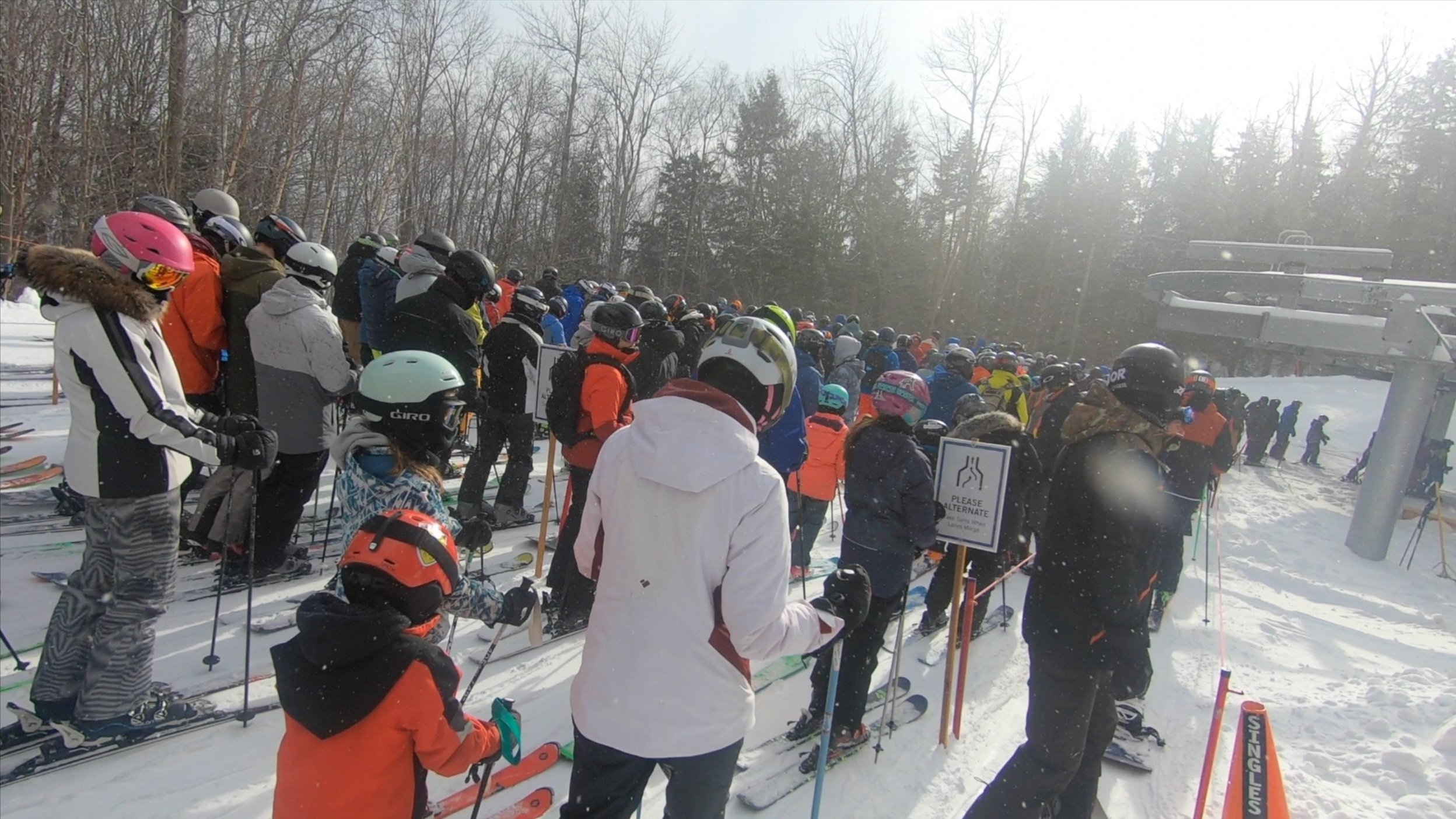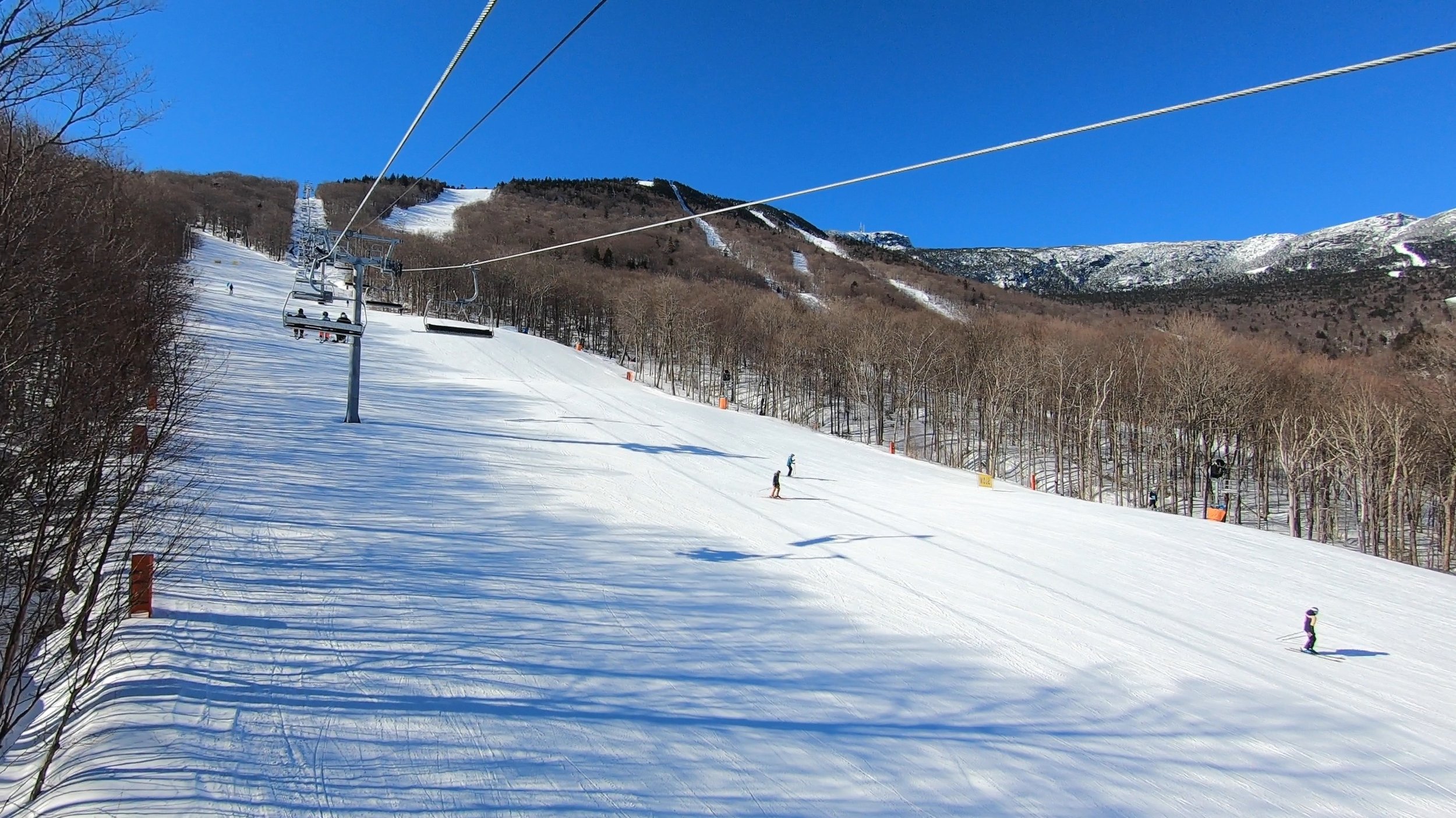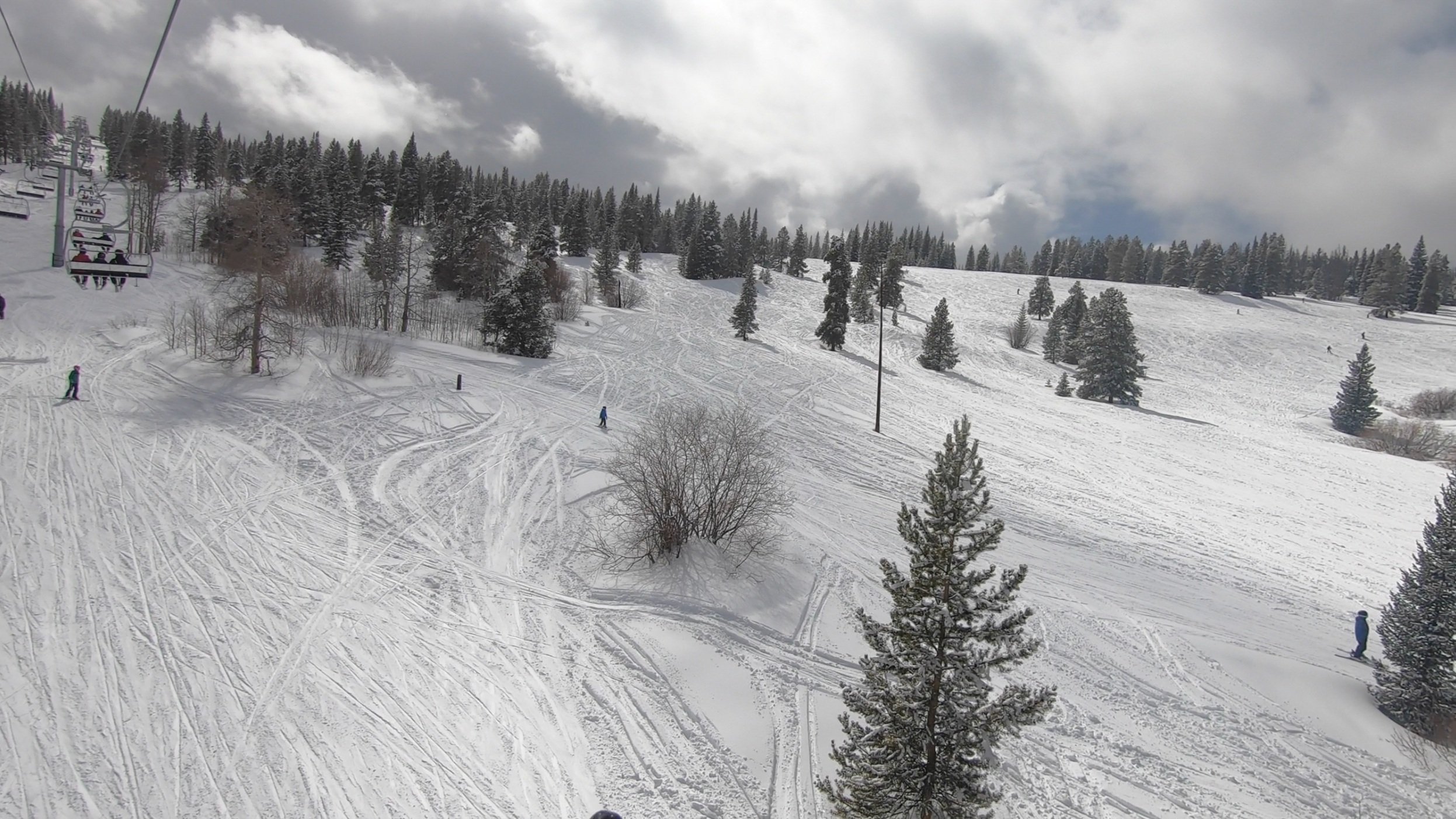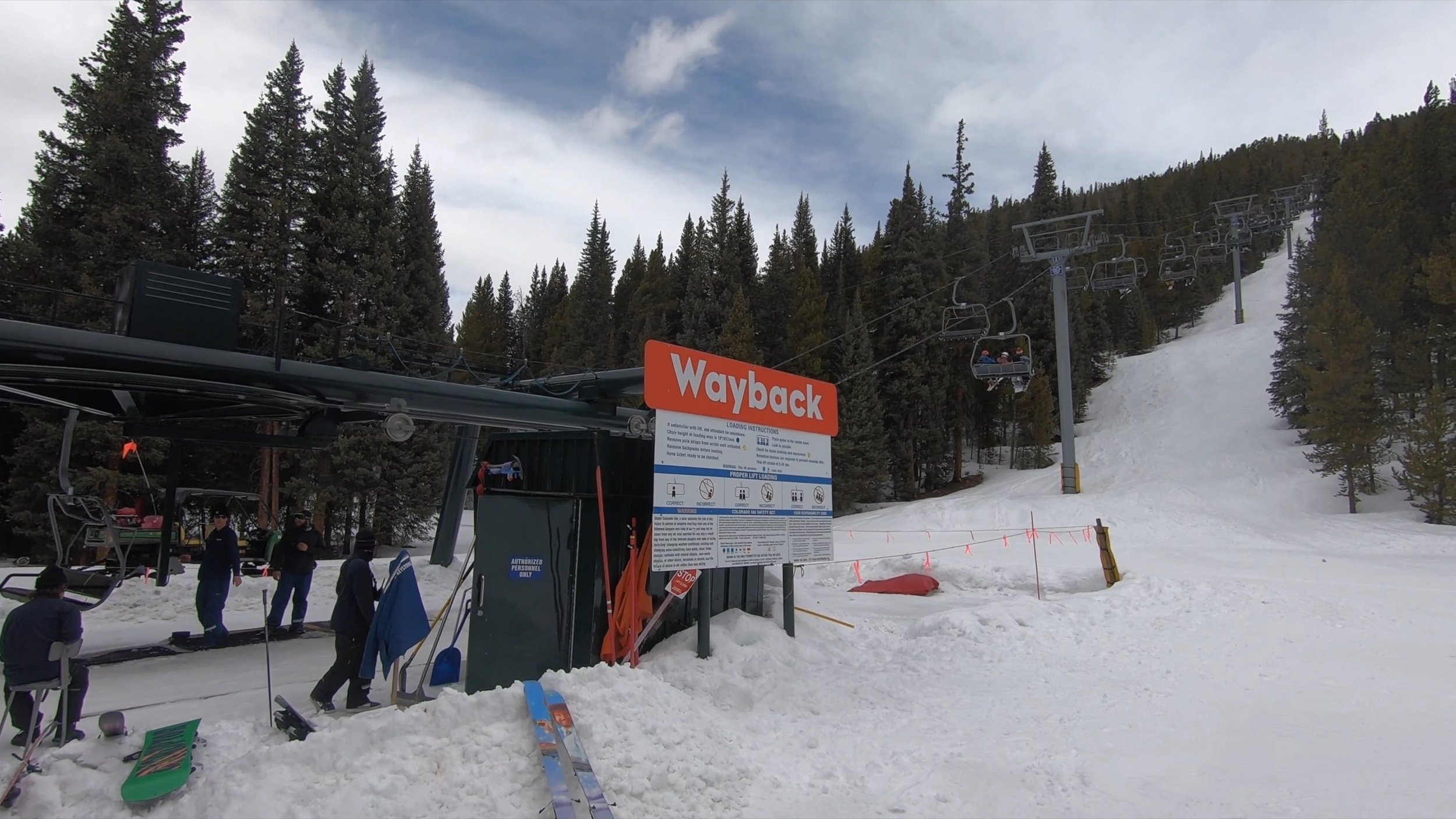Vail Resorts Epic Lift Upgrades: A Comprehensive Effectiveness Breakdown
Vail Resorts is now the largest ski resort conglomerate in history, operating a whopping 41 ski resorts and driving more than a fifth of all North American skier visits last season. But this company isn’t just about to let its ski industry dominance slip away—and in 2022 alone, Vail installed a stunning 18 new lifts across 12 different resorts.
But if you’ve spent time at some of these mountains and seen the locations of some of these lifts—many of them expensive high-speed quads—you might be wondering, what were they thinking? Why did Vail prioritize certain lift replacements over others, and why did it even build some of them in the first place?
Well, in this piece, we’ll go through our thoughts on Vail’s mindset for these sizable investments, and the six types of categories we believe they fall into. And while we don’t necessarily endorse all of these upgrades—or lacks thereof—after looking a bit deeper at each of these categories, it’s a lot easier to understand their rationale.
It’s also worth noting we didn’t just randomly decide to put up this article when we did—and at the end, we’ll dive into why right now is a particularly important moment in Vail Resorts’ history to be having this conversation.
Mount Snow’s Sunbrook Express high-speed quad replaced a sluggish fixed-grip lift for the 2022-23 season.
Category #1: Adding High-Speed Lifts to New Areas
Let’s start with what’s probably the least controversial of Vail’s lift upgrade strategies: replacing slow lifts that hold down service to major terrain areas with fast ones.
The best destinations offer high-speed lift service on most or all of their lift-served terrain these days, and there were certainly a few notable areas at Vail’s mountains that were ready to see some patching in this regard.
Examples of lift upgrades that fell or will fall into this category are Mount Snow’s Sunbrook Express, Heavenly’s North Bowl Express, and Attitash’s upcoming Mountaineer Express, which will replace its Summit Triple. We’d argue that all of the upgrades here were clearly needed, and it’s going to be hard to find anyone who didn’t find these to be palpable experience improvements.
Category #2: Reducing Chokepoints
Next up, we have a category of lift upgrades that may not make immediate sense when you first look at a trail map, but start to become a lot more obvious as you spend more time at Vail’s mountains.
A number of projects either replaced existing high-speed lifts with installations that ran at the same speed as the old ones, or added a new lift in an area that was already served by a modern, detachable lift. So why did these upgrades take place, even when the affected areas already seemed to offer sufficiently brisk uphill service?
Well, even though the existing lift setups may have been fast enough, in many cases, they hadn’t been able to handle the crowds that came through during peak times. Upgrading quads to six-packs, or putting in a completely new lift in the most egregious cases, was intended to address this issue. Examples of lift upgrades that fall into this category are Breckenridge’s Freedom SuperChair, Vail’s Sun Down Express, Whistler Blackcomb’s Big Red Six-Pack and Creekside Gondola, and Okemo’s Quantum Six and Evergreen Summit Express lifts.
We’d argue that the outcomes of these installations have been generally positive but mixed. It’s hard to contend they don’t move crowds more efficiently up the mountain, but they come in the wake of increased visitation to every single one of these mountains—and just general record skier and rider visits across all of North America. And while these projects have probably done quite a bit to prevent the lines from becoming even worse, if you’ve been a peak-time visitor at one of these mountains, especially Okemo or Whistler, the swelling crowds have probably overshadowed the experience improvements from the new lifts. And if you went on an off-peak weekday, there likely weren’t any lines anyway, so the extra capacity probably wasn’t very relevant.
But while not everyone may find these lifts to be palpable improvements—and many will argue that other steps need to be taken to reduce crowds—there’s no doubt they’ve all given their resorts more comfortable carrying capacity to work with.
Northstar’s new Comstock Express six-pack replaced a high-speed quad that was over three decades old.
Category #3: Life-Cycle Replacements
Some of the high-speed lift replacements in the past few years didn’t actually have a huge impact on capacity. So why did they even get the green light?
Well, it turns out that some of Vail’s high-speed chairlifts, especially at its flagship Rockies resorts, have started to reach the end of their serviceable lifetimes—and are getting to the point where they may not be able to operate reliably without a replacement in the next few years. Some recently replaced lifts that fell into this category were over 30 years old, making them among the oldest detachables in Vail’s lift fleet.
But wait a minute, you may be thinking, there are plenty of slower chairs that are over 40 years old and are still in running condition! Well it turns out that high-speed, detachable lifts have a lot more moving parts than the slow, fixed-grip chairs, and as a result, there’s a lot more to go wrong, especially as the lifts get older. As a result, these high-speed chairlifts really do need to be replaced more frequently than their slower counterparts—and by upgrading its oldest high-speed chairs, Vail is ensuring a reliable operating experience at its resorts for years to come. Examples of lift upgrades that fall into this category are Vail Mountain’s Game Creek Express and Keystone’s Peru Express. And while some will validly contend that Northstar’s Comstock Express six-pack should fall into the reducing chokepoints category, we’d argue it fits here as well, as if it hadn’t been 33 years old at the time of its replacement, it’s easy to see other projects being prioritized first.
We do have to note that Vail Resorts hasn’t exactly neglected its fixed-grip lift fleet either. The company recently replaced several lifts that date back as early as 1972 at Attitash, Jack Frost, Big Boulder, Boston Mills, and Brandywine with modern fixed-grip quads. Vail may not have felt the need to upgrade the lifts at these smaller, regional mountains to high-speeds, but still felt reliability upgrades warranted the investment.
Category #4: Beginner Experience Improvements
Even with the crowd and life-cycle-oriented lift upgrades in certain resort areas, you might still be puzzled by a handful of high-speed installations in seemingly questionable areas. Why did Vail Resorts upgrade some of its shortest lifts near the bottom of its mountains, while some longer, more prominent chairs at the same resorts were passed over for high-speed upgrades?
Well, it all comes down to less-experienced guests. In recent years, Vail has wanted to make the on-mountain experience for beginners as inviting as possible. As a result, some of the company’s popular destinations have seen their older bunny hill lifts transformed into quick, easy-to-access high-speed quads or sixers.
Some might argue that beginners don’t need these fancy lifts—after all, these lifts are short and these types of visitors are gonna take quite awhile to get down the slopes anyway, right? But thanks to their slower loading speed, detachable lifts are often much easier for beginners to load and get off of than traditional fixed-grip chairs, which don’t slow down. Vail might contend this makes for a much more enjoyable experience when people are learning to ski or snowboard, making them more likely to stick with the sport and book return trips, especially at the mountains the company owns.
Examples of lifts that fall into this category include Breckenridge’s Rip’s Ride and upcoming Five SuperChair, Stowe’s Sunrise Six, and Mount Snow’s Sundance Express. And while they weren’t detachables, a few of the brand-new fixed-grip quads that Vail installed at its regional Northeast and Midwest mountains were intended to increase capacity and improve the experience in beginner-oriented areas as well.
Beaver Creek’s McCoy Park Express lift enabled a major beginner terrain expansion at that Colorado resort.
Category #5: Terrain Expansions
For our last category of investments Vail actually pulled the trigger on, we’ll cover what’s probably also the most exciting one: lifts that serve brand-new terrain that either previously did not exist in bounds or required hiking to reach.
That’s right, a couple of new Vail Resorts lifts did more than just enhance uphill service—they added access to completely new mountain zones. In the handful of cases over the past few years where Vail Resorts decided to install such lifts, the new skiable footprint addressed major terrain shortcomings that had previously left the pertinent resorts at a disadvantage compared to nearby competitors.
As of 2020, Vail Resorts has only spearheaded three expansion-focused lifts: Beaver Creek’s high-speed McCoy Park Express and fixed-grip Reunion quad lifts, which were installed for early 2022, and Keystone’s Bergman Express six-pack, which is on track for completion in late 2023 after a series of unfortunate delays. Both of these resort expansions were designed to address a lack of high-alpine bowl terrain.
Beaver Creek’s McCoy Park lifts have allowed it to expand into a new bowl-like beginner terrain footprint, while Keystone’s Bergman Bowl lift will enable lift service to its above-treeline bowl terrain for the first time. While we won’t be able to reserve final judgment on the Keystone upgrade until it’s finished for the upcoming season, we will say that the McCoy Park expansion has been one of the most effective Colorado resort investments in decades, offering perhaps the best beginner bowl-like terrain in the state—and it wouldn’t have been able to happen without the lifts that service it.
And while these expensive expansions have been far less frequent than the other categories of lift upgrades discussed in this video, they’re not exactly unprecedented. Vail Resorts has been slowly expanding its resorts with lift upgrades for years, including Breckenridge’s extension to Peak 6 via the Zendo Chair and Kensho SuperChair, and Park City’s merger with Canyons via the Quicksilver Gondola. Vail hasn’t announced any additional terrain-serviced lift expansions at this point in time, but we’ll be following along to see if they come up with anything else.
Park City’s Town Lift takes an agonizing 13 minutes to ride, but town planning circumstances mean it probably won’t be upgraded any time soon. You can tell just how long this lift is by the number of chairs.
Category #6: Lift Upgrades That Were Passed Over
While Vail Resorts has put in a wild amount of upgrades over the past several years, we would be remiss if we didn’t mention some of the notable lifts that have been passed over. And for the most part, the missed opportunities are slow, fixed-grip lifts that involve less-than-enjoyable ride times. However, these lifts involve unique circumstances that may have hurt the case for upgrades, even with Vail’s strong revenue and cash on hand.
Park City Town Lift
Let’s start with Park City, and while there are still a number of slow lifts across the massive 7,300-acre footprint, the resort’s Town lift stands out with the longest ride time, taking over 13 minutes to ride from bottom to top. Of Park City’s 36 lifts, the Town chair is the sixth-longest at the resort—so why is it still a slow triple?
Well, there are a couple of reasons for this, and they’re not likely to change any time soon. First off, the Town lift starts in a historic part of downtown Park City, and as per local employees, upgrading the lift to a detachable would bring a lot more noise and infrastructure to this area, detracting from the charm. In addition, the Town lift really doesn’t serve that much terrain, only providing exclusive access to a handful of intermediate trails and functioning more as a real-estate lift than anything else. As a result, it’s really not that much of a priority compared to other Park City lift projects—and that’s without even getting into Vail Resorts’ relationship with Park City’s Planning Commission, which recently cancelled two of the resort’s lift projects at the last minute.
While Heavenly’s North Bowl lift got a high-speed upgrade, the nearby, out-of-base Boulder lift remains outdated.
Heavenly Boulder Lift
Next up we have Heavenly, and while the resort recently upgraded its North Bowl chair to a high-speed quad, they left the lower-mountain Boulder chair, which provides access from the Boulder parking lot to this North Bowl lift, as a slow, fixed-grip triple.
We’re not really sure why the resort chose to leave the Boulder lift as it is, given the Boulder/North Bowl combination primarily serves as a means to travel from the Boulder base to the rest of the mountain. Moreover, Heavenly does not offer high-speed lift access to any of its beginner terrain, and upgrading the Boulder lift would have addressed this crucial issue. The lack of an investment here is especially surprising considering how much Vail Resorts has focused on beginner lift access at their other mountains.
Some folks familiar with resort operations have claimed that the Boulder base’s parking setup is what informed Vail’s decision to pass over an upgrade for the eponymous lift. The Boulder lot can only hold a fraction of the cars of Heavenly’s other bases, and with traffic in Tahoe only getting worse, resort management may have felt that the additional demand brought about by a faster lift would have overwhelmed the area. But on the other hand, other familiar parties have claimed that a Boulder upgrade is actually coming in the next 1-2 years, although no plans have been officially confirmed by Vail Resorts.
Ultimately, we’ll just have to wait and see on this one.
Multiple Kirkwood Lifts
It’s also unlikely that Heavenly’s sister resort Kirkwood will see notable upgrades any time soon. The resort hasn’t seen a single lift upgrade since Vail bought it in 2012, and while there are at least three lifts we can think of that could really benefit from high-speed upgrades, the resort just doesn’t experience the visitation we think Vail would need to see to pull the trigger on any of them.
Keystone’s Wayback Quad provides the only access out of the Outback zone, and guests must engage in the drawn-out nine-minute ride to get to the closest lodges and bathrooms.
Keystone Wayback Quad
And finally, let’s discuss Keystone’s Wayback quad, a lift that’s less frustrating for its ride time—although it is a pretty drawn-out nine minutes—and more annoying for the fact that guests are forced to ride it to get out of the furthest-back Outback mountain zone. To make matters more frustrating, there are no lodges or even bathrooms in the Outback area, so guests hoping to escape some cold weather or take a bathroom break will have to put up with a leisurely ride here first.
So why hasn’t Wayback been upgraded—even as Keystone has prepped three new high-speed lifts in the past six years? Well, Wayback has historically only directly served two trails, so while it’s a critical lift for leaving the Outback zone, it hasn’t exactly been a practical pod for lapping trails. However, a handful of new runs off the upcoming Bergman Bowl lift will also filter back to this chair, so this circumstance will certainly change in the coming seasons—and with the Wayback lift now over three decades old, perhaps Vail Resorts will revisit this one.
Final Thoughts
So while the dozens of lift upgrades at Vail-owned mountains may come across as anywhere from much-needed to fairly bonkers, the truth of the matter is Vail Resorts had strategic reasons for every one of them. And while we could easily argue that certain resorts or mountain areas that didn’t receive upgrades should have been prioritized over the ones that did, Vail is a massive public company, and it’s ultimately going to do what’s best in the eyes of its shareholders. Keeping lifts reliable, trying to mitigate chokepoints, and investing in the beginner experiences at popular resorts are all pretty good reasons to prioritize lift enhancements, and each of these pillars will all be critical to maintaining visitation throughout the years and decades to come.
What Vail’s 2023 Year-End Report Tells Us About Future Lift Upgrades
There’s also another reason why right now is a particularly significant moment in Vail Resorts’ lift investment journey: the company just released their full-year 2023 financial report, and it looks like they’ve significantly pulled back on lift projects for the next few seasons. After installing a combined 25 new lifts for 2021 and 2022, the company only has five new lifts scheduled to debut this year—one of which was delayed from last year—and three scheduled for 2024. Instead, Vail is focusing on stock buybacks, paying out dividends, and spearheading other experience strategies that don’t have to do with major infrastructure overhauls.
Some may pin this on Vail Resorts being a large mega-corporation, and others might lay the blame on rising interest rates. But either way, the upgrades we have now are, for the most part, the ones we’ll be living with for the foreseeable future—and if this means that some non-strategic areas retain less-than-ideal lift setups for the next several years, that’s just the reality of the situation.
For more information on Vail Resorts mountains, see our Epic Pass mountain reviews as well as our Colorado, Tahoe, Utah, Vermont, Washington, and Western Canada rankings.








